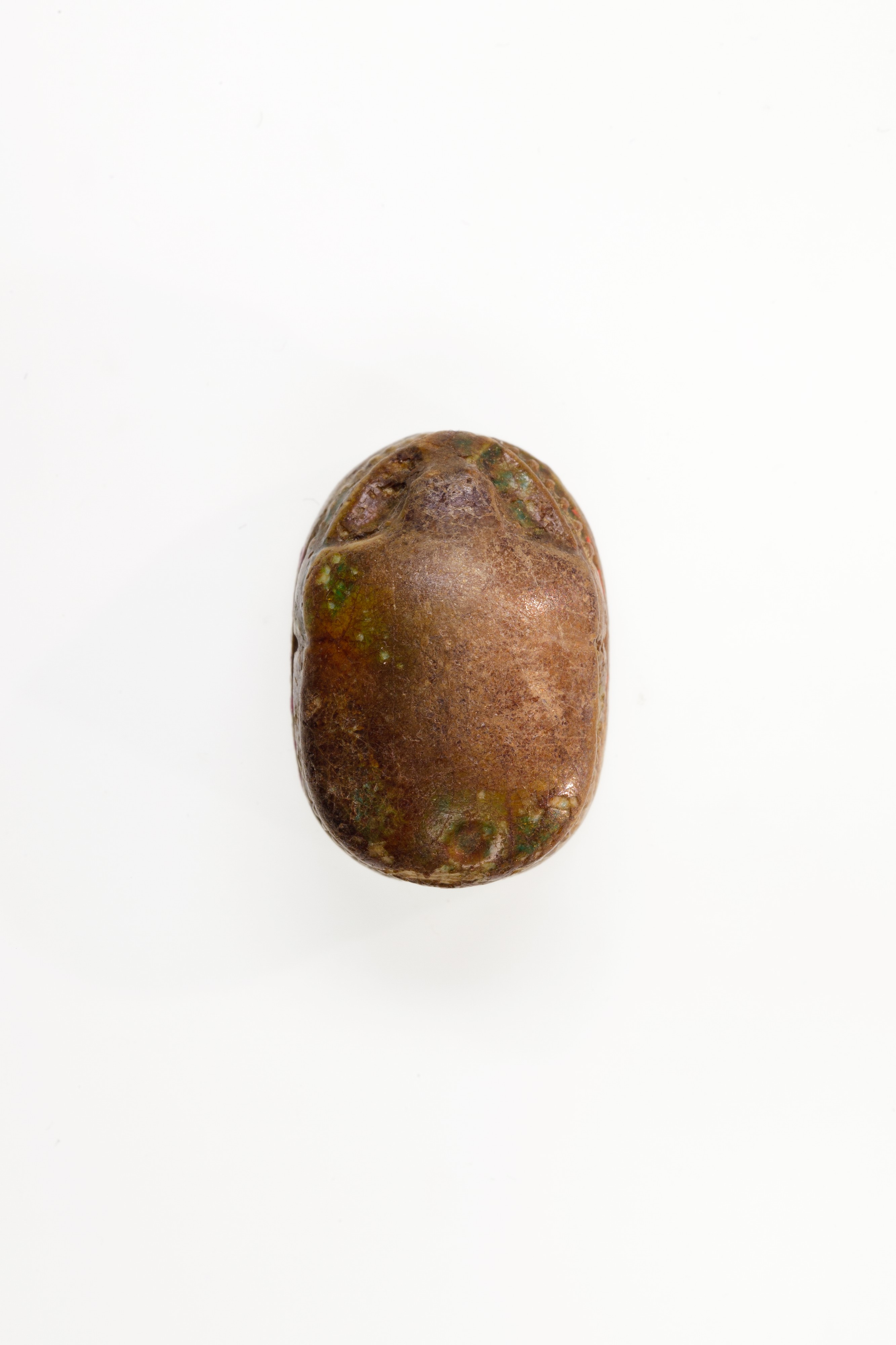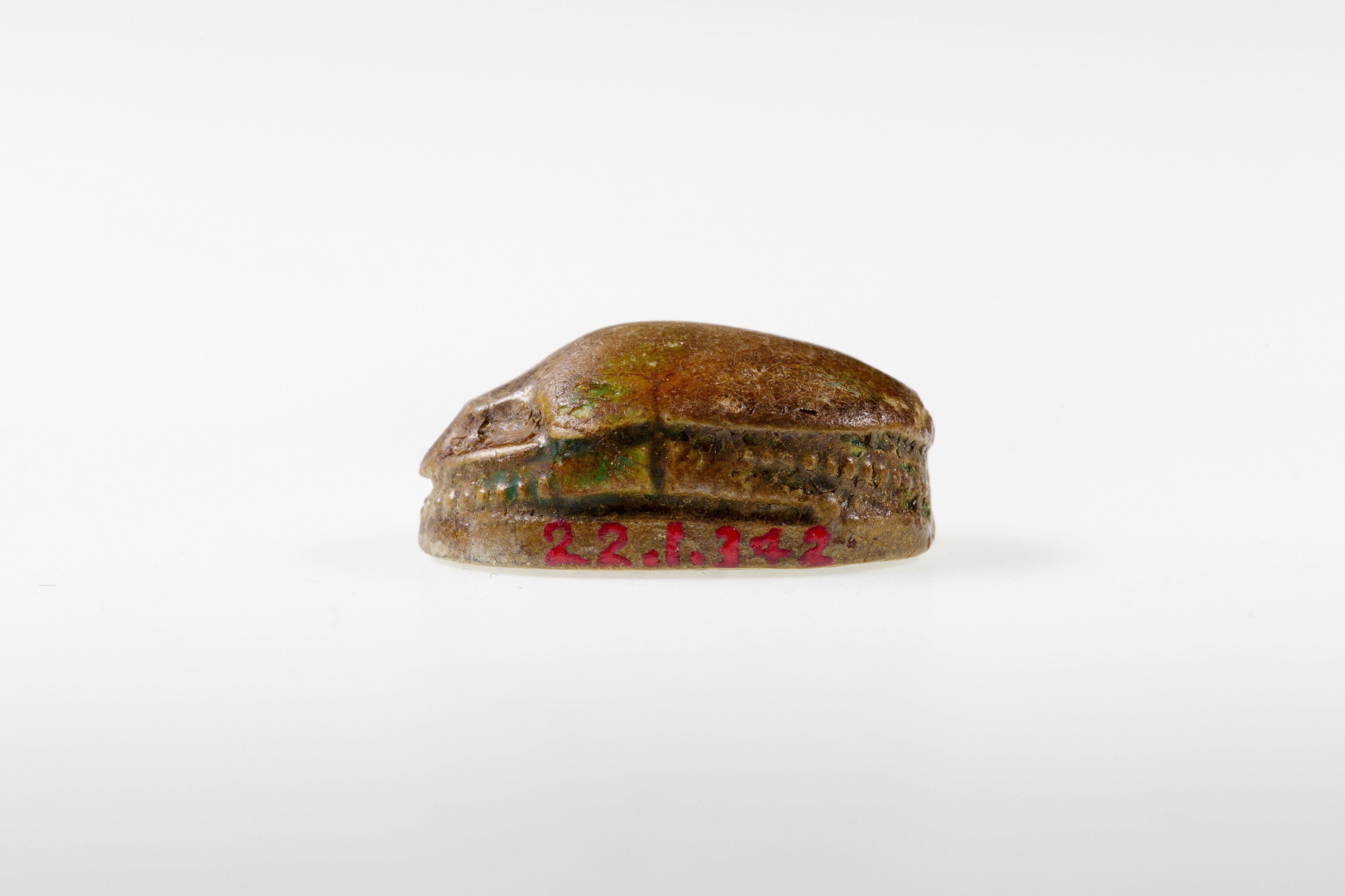Scarab Inscribed with Hieroglyphs
Middle Kingdom
The majority of design scarabs of the late Middle Kingdom (late Dynasty 12–Dynasty 13, ca. 1850–1640 B.C.) are decorated with symmetric compositions of protective hieroglyphs and/or scrolls. This scarab shows the sign for good and beautiful (nefer) and a sun disk placed inside an oval, which is a debased version of the royal cartouche. The combination of signs possibly forms an inscription referring to the sun god Re. The oval is surrounded by symmetrically arranged hieroglyphs such as the sign of life (ankh), the djed-pillar (stability), and the ostrich feather (maat), adding to the protective nature of the amulet.
Due to rights restrictions, this image cannot be enlarged, viewed at full screen, or downloaded.
This artwork is meant to be viewed from right to left. Scroll left to view more.





